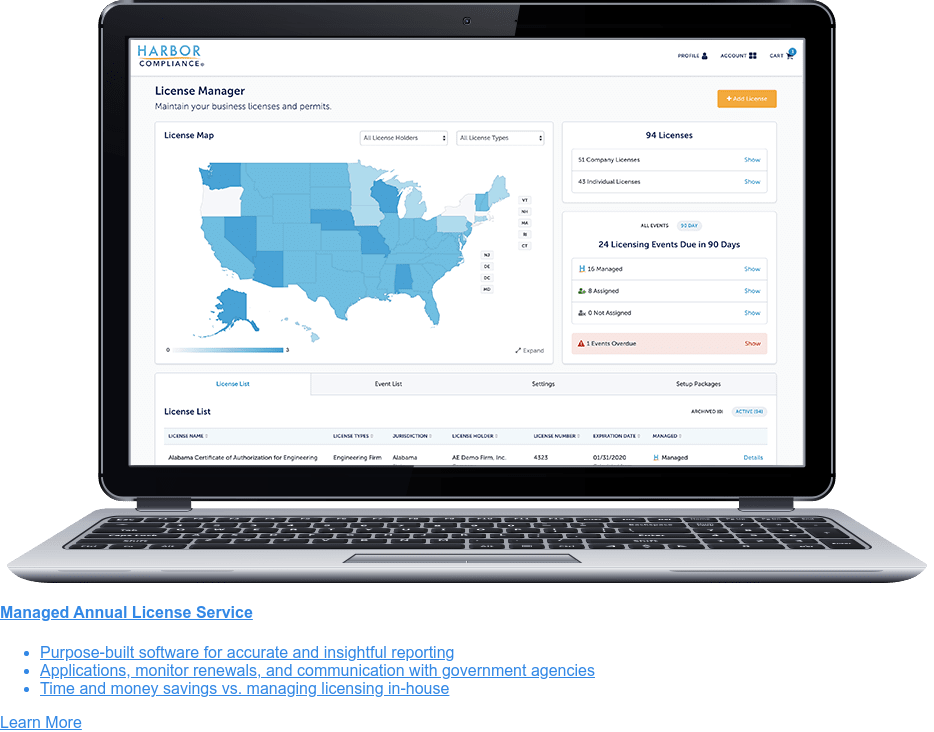
Interior Designer Certification
Become a certified interior designer by meeting educational, experience, and examination requirements.
About Certification
Before going into the application process for an interior design certification, it is important to understand what certification will enable you to do. States vary when it comes to the rights given to certificate holders, but there are three main categories of certification:
Mandatory Registration
In Florida, Louisiana, Nevada, and the District of Columbia, interior designers must hold a board-issued license before practicing interior design. While other states regulate the titular use of “Certified Interior Designer” and similar terms, mandatory registration jurisdictions restrict the practice of interior design to only licensed individuals.
Voluntary Registration
The majority of states that register interior designers do not restrict designers from practicing without certification, but instead simply prevent them from using terms like ‘registered’ or ‘certified’ with regard to themselves or their business. In some voluntary registration states, designers are allowed to apply for code-based permits.
Private Certification
In California there is no state board for interior design, but designers must register with the non-governmental California Council for Interior Design Certification (CCIDC) in order to use the word ‘certified’ in relation to their interior design practice.
Click on a state to read about detailed license requirements in that state.Prerequisites
While each state board for interior designers has its own requirements for licensure, potential licensees will follow a similar path of prerequisites to obtain a license in any state. Prerequisites typically include:
- An education requirement - Most states require a degree from a Council for Interior Design (CIDA) accredited program.
- Successful completion of the National Council for Interior Design Qualification (NCIDQ) exam.
- A requisite amount of design experience, which for most states is between two and four years and is usually under the supervision of a registered interior designer.
Initial Application Process
After meeting education and experience requirements, applicants can begin the examination process by applying for approval with the Council for Interior Design Qualification (CIDQ). After approval, applicants will need to schedule and pass the three sections of the exam.
After passing the exam, applicants typically apply for registration through the state licensing board. In some cases, applicants must file an application with the state board prior to taking the NCIDQ.
Reciprocal Registration
Thanks to reciprocity, interior designers are licensed to practice in more than just one jurisdiction for greater job flexibility, mobility, and security. Reciprocity or licensure by comity is when a registered interior designer in one jurisdiction applies for registration in another by providing documentation that he or she meets that jurisdiction's registration requirements. In some cases, designers registered in one jurisdiction may need to meet additional experience or education requirements before becoming certified in another state.
Renewal Requirements
Interior design certifications typically need to be renewed on an annual or biennial basis. In addition to filing a renewal application and paying the license renewal fee, interior designers in almost every state must also complete continuing education hours during the license renewal period. Most states require at least 10 hours of continuing education over the course of a two-year license period. Keeping up with each state’s requirements, tracking renewals, and submitting the applications on time is critical to avoiding penalties. Dedicated compliance software and services can help you keep track of varying jurisdiction requirements and relevant updates to state laws.
Explore Certification in Your State:
ARE (Architect Registration Examination) - Assesses candidates for their knowledge, skills, and ability to provide the various services required to be a practicing architect.
AXP (Architectural Experience Program) - NCARB program for architectural internship, a requirement for licensure that occurs after filling the educational requirements.
BEFA (Broadly Experienced Foreign Architect) - An alternative NCARB certification that allows foreign architects to independently practice architecture.
COA (Certificate of Authorization) - The most common name of the registration required for firms to practice architecture in a given state.
Design Firm - Architectural firm registration is sometimes grouped with engineering and land surveying on a single “design firm” application form.
NCARB Certification - Licensed architects have the option to become Certificate holders to signify that they have met national standards established by U.S. licensing boards for protecting public health, safety, and welfare. Certification also facilitates reciprocal registration in all 54 jurisdictions, 11 Canadian jurisdictions, and can be used to support an application for licensure in other countries.
Reciprocity - This is when a licensed architect in one state can provide documentation (often a NCARB certificate) to more easily apply for licensure in another jurisdiction.
State Board - Often referred to as the State Architects Licensure Board or Board of Architects, an individual state’s board serves as the regulatory authority for architects. The board qualifies and licenses individuals seeking architectural licensure. The board is responsible for preserving the public health, safety, and welfare of individuals who occupy built environments.
National Architecture Accrediting Board
NAAB establishes criteria for and accredits professional architecture degree programs in the United States.
The American Institute of
Architecture Students (AIAS)
AIAS is an independent, student-run group that promotes excellence in architecture education, training, and practice.
The American Institute of Architects (AIA)
AIA is a voluntary professional organization for architects providing advocacy, information, and community.
The Association of Collegiate
Schools of Architecture (ACSA)
ACSA represents architectural education programs across the globe.
The National Council of Architectural Registration Boards (NCARB)
NCARB is the national organization representing the state registration boards.




